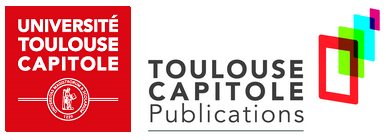Biais, Bruno , Declerck, Fany
, Declerck, Fany and Moinas, Sophie
and Moinas, Sophie (2017)
Who supplies liquidity, how and when?
TSE Working Paper, n. 17-818, Toulouse
(2017)
Who supplies liquidity, how and when?
TSE Working Paper, n. 17-818, Toulouse
Preview |
Text
Download (476kB) | Preview |
Abstract
Who provides liquidity in modern, electronic limit order book, markets? While agency trading can be constrained by conflicts of interest and information asymmetry between customers and traders, prop traders are likely to be less constrained and thus better positioned to carry inventory risk. Moreover, while slow traders'limit orders may be exposed to severe adverse selection, fast trading technology can improve traders'ability to monitor the market and avoid being picked off. To shed light on these points, we rely on unique data from Euronext and the AMF enabling us to observe the connectivity of traders to the market, and whether they are proprietary traders. We find that proprietary traders, be they fast or slow, provide liquidity with contrarian marketable orders, thus helping the market absorb shocks, even during crisis, and earn profits doing so. Moreover, fast traders provide liquidity by leaving limit orders in the book. Yet, only prop traders can do so without making losses. This suggests that technology is not enough to overcome adverse selection, monitoring incentives are also needed.
| Item Type: | Monograph (Working Paper) |
|---|---|
| Language: | English |
| Date: | June 2017 |
| Place of Publication: | Toulouse |
| Uncontrolled Keywords: | Liquidity, high-frequency trading, proprietary trading, adverse selection, electronic limit order book, short-term momentum, contrarian |
| JEL Classification: | D82 - Asymmetric and Private Information G1 - General Financial Markets |
| Subjects: | B- ECONOMIE ET FINANCE |
| Divisions: | TSE-R (Toulouse), TSM Research (Toulouse) |
| Institution: | Université Toulouse 1 Capitole |
| Site: | UT1 |
| Date Deposited: | 13 Jun 2017 13:22 |
| Last Modified: | 02 Apr 2021 15:55 |
| OAI Identifier: | oai:tse-fr.eu:31768 |
| URI: | https://publications.ut-capitole.fr/id/eprint/24141 |




 Tools
Tools Tools
Tools
